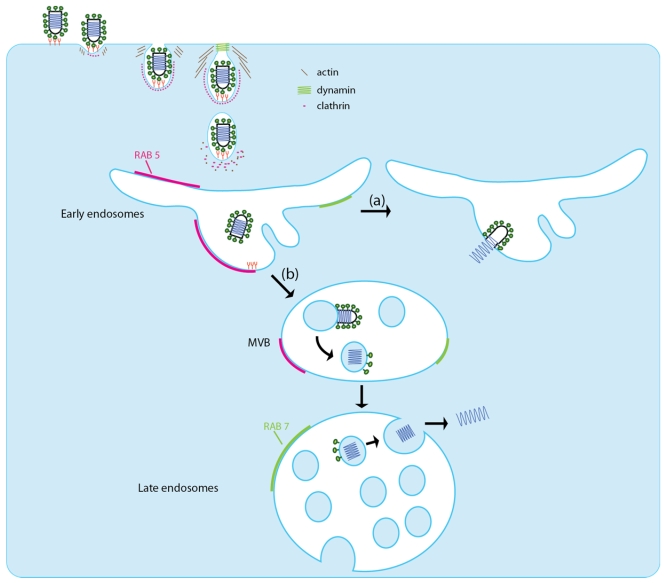Figure 5.
The two proposed pathways for VSV entry into the host cell. VSV binds to the host cell via an interaction with one or several unknown receptors. The VSV particles are then endocytosed in a clathrin-based, dynamin-2-dependent manner. The endocytosis vesicle is partially coated with clathrin and requires actin polymerization for efficient viral entry. Pathway (a): fusion occurs rapidly in early endosome and leads to the release of the nucleocapsid into the cytoplasm. Pathway (b): VSV fuses first with an internal vesicle inside multivesicular bodies. The nucleocapsid is then released in an internal vesicle. In the late endosome, these vesicles deliver the nucleocapsid to the cytoplasm through a back‑fusion mechanism. Small GTPase RAB5 (pink) is mainly present on early endosomes, whereas RAB7 (light green) is present mostly in late endosomes.

